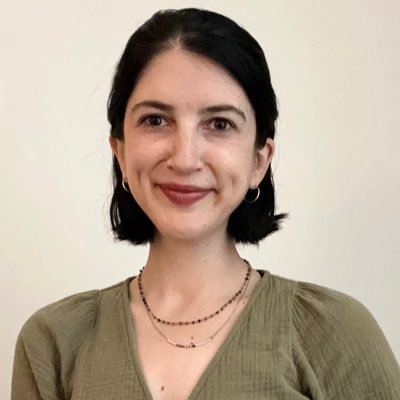A canopy of elm, maple, magnolia, dogwood, oak, and ash trees cover the city of Atlanta—47% of it to be precise, more than any other city in the United States. “City in a Forest” might be an imperfect nickname—and hey, at least it’s not “Hotlanta”—but it’s accurate.
The trees that remain have survived hurricanes. They’ve survived lightning strikes. They’ve survived the occasional tornado. They’ve survived the encroaching forces of development and gentrification. And if a powerful, diverse coalition of people win, these trees will also survive the attempt to build Cop City.
[photo by Rachel Garbus]
In 2021, the City of Atlanta approved a wildly unpopular plan to lease acres of the South River Forest, Metro Atlanta’s largest stretch of tree canopy—a bulwark against heat and flooding, and an important public good— to the Atlanta Police Foundation (APF), the ATL police department’s private fundraising arm, in order to build a $90 million police and fire training facility.
While contractors and government actors have been moving forward with plans for almost two years now (some longer—the APF originally proposed the forest as the site of Cop City in 2017), until recently, the forest remained fiercely protected. Construction vehicles have been burnt. Forest defenders have been living amongst the trees they seek to protect.
The forest cannot protect people from police terror, though. Tragically, on January 18, member(s) of the Georgia State Patrol shot and killed a forest defender named Manuel Teran, AKA Tortugita. A private autopsy carried out by Tort’s family revealed that they’d been shot 13 times.
According to the police, the shooting occurred after Tort allegedly opened fire. It’s worth noting that no evidence has been presented to confirm that claim from the police, though. In fact, the Atlanta Police Department started releasing body cam footage last night, just hours before this essay was published, and at least two clips have surfaced so far that seem to indicate so-called “friendly fire,” including one in which an APD officer says, “Man, you fucked your own officer up?”
Tort—who by all accounts was a beloved and integral part of the forest community who espoused nonviolent resistance—understood that the movement has space for many different tactics of resistance and power building. In addition to more radical direct actions, there are also concerts and teach-ins and guided walks and tree plantings and dance parties that have taken place on the needled forest floor. All of these forms of protest and community building are not only effective, they feel sustaining. They represent the kind of organization that serves to radicalize new people into the movement and, crucially, develop a sense of real collective power.
Make no mistake: the movement to stop Cop City is powerful. Tort’s killing and the increasingly combative response from the City have only served to strengthen organizers’ resolve. And in a refreshing change for organizing in Atlanta, this movement isn’t led by legacy nonprofits or outside donors. This movement is autonomous, decentralized, and non-hierarchical. It should serve as a blueprint for future fights for a livable Atlanta.
The South River is one of the three largest river basins in the Eastern United States. It absolutely teems with life. The South River Forest—home to at least 150 different species—functions as the lungs of our city.
Eighty five acres of that forest—which I’ll refer to as Weelaunee, its original Muscogee name, from here on out—are vulnerable to being developed into a sprawling police and fire training facility, complete with a little replica city in which police can be trained in the most effective ways to traumatize, surveil, and kill citizens. The proposed complex would share space in the (former) forest with a number of other private, not-entirely-above-board projects.
In September of 2021, the City of Atlanta—walking back its 2017 promise to preserve the forest as a public good—approved a plan to lease the land to the very powerful nonprofit APF, despite overwhelming public opposition. (This is the result of, among other things, APF twitching its city-wide puppet strings. Micah Herskind did a great job explaining this in detail.)
At the time of the vote, the City Council was still meeting only via Zoom (sans video, so it’s entirely possible that the only people who listened to all 17 hours of public comment, the majority of which was opposed to Cop City, were the organizers categorizing the comments, not the public servants to whom they were directed). On the night of the vote, protests cropped up outside of city council members’ homes. When Councilwoman Joyce Shepherd came off mute, cries of “Stop Cop City” could be heard from citizens outside her house.
After I logged off the Zoom in disgust to go for a cool-down walk, I discovered that Councilman Matt Westmoreland was my neighbor. (The context clue was the small but determined crowd yelling at his condo window.) The collective reaction from the people—the rage, the indignation, the refusal to roll over and accept defeat—was substantial. It seemed to surprise the electeds.
Decentralized actions like the fight to stop Cop City come into being when people fully lose faith in politicians or advocacy organizations allegedly acting on their behalf and decide to act for themselves. There are no appointed leaders. There is no representation. And while it’s done in the collective, it’s also an individual practice: autonomous self-organization means a person organizing their own struggle against the unfree and unfair conditions this world forces upon them to the extent of their own ability.
In Atlanta, where radical grassroots organizing can be subverted by legacy nonprofits and the corporations who sustain them, this model of resistance is particularly exciting. The coalition fighting Cop City is composed of a diverse group of people. From neighborhood associations and environmental groups to prison industrial complex abolitionists and engaged citizens from near and far, the intersectionality of the fight is clear. (There’s even a group of concerned toddlers in East Atlanta.) As ATLiens continue to fight for progress in the future, diverse groups like these will make our movements stronger.
It’s worth noting that the land at the center of the fight is already ringed by carceral facilities. Surrounding Weelaunee is the Metro Transitional Center (a Georgia Department of Corrections building housing people transitioning out of prison), the Helms Facility (where a small cohort of incarcerated pregnant people and those with very serious illnesses reside), and the Metro Regional Youth Detention Center (a jail for kids). As is always the case, the people most immediately impacted by the loss of the forest would be those already disenfranchised. The children at Metro Regional will be subjected to the escalating staccato of gunfire. The pregnant people and the seriously ill at Helms will feel the increase in average daily temperatures predicted if the forest is razed. The communities surrounding the South River—which are overwhelmingly poor and non-white—will face the potential floods first.
In the aftermath of Tort’s killing, the powers that be attempted to coalesce around the classic “outside agitators” narrative—a misleading, persistent, oft-racist trope that has its roots in the civil rights movement. AJC columnist Bill Torpy saw fit to dismiss the wide-ranging local opposition, writing that “Elected officials were making a hard, and not altogether popular, choice to go with what they believed their constituents wanted, not the wishes of some vagabond out-of-towners who climb trees in the woods to protest Cop City.” In the aftermath of his tone-deaf column, Torpy stepped in it even deeper on Twitter.
On January 31, Atlanta Mayor Andre Dickens and DeKalb County CEO Michael Thurmond held a press conference—despite the fact that many members of the press were not allowed in the room—announcing that permits were a go and Cop City construction was moving forward. Thurmond told the media that the forest was free of protesters. On Monday, days before this essay was published, a multi-jurisdictional SWAT team invaded the forest with a helicopter, construction crews, and equipment. This is what it looks like when the state protects a private company as it undertakes a violent, unpopular project.
Although there will no doubt be further setbacks, the movement to Stop Cop City is not going anywhere. The actions being taken to save the forest are rooted in a clear-eyed understanding of both power and the ways in which the forces of capitalism often co-opt and disfigure righteous struggles.
Part of the best possible outcome here is that the fight against Cop City will help ATLiens better recognize and understand our collective power. Our future fights must not be led by people or institutions seeking power and prestige over solidarity and results. What the huge, diverse group fighting Cop City knows is this: the stakes could not be higher. Police will be there to brutalize us in every radical fight for a better future—or, as the case may be on our warming planet, for a future at all. The more who join this righteous fight—contributing how and what they can—the better.
Or, as Tortugita told The Bitter Southerner in one of their many conversations: “What I’m saying is, if they do a huge crackdown and completely try to crush the movement, they’ll succeed at hurting some people, they’ll succeed at destroying some infrastructure, but they’re not going to succeed at stopping the movement.”
“That’s just going to strengthen the movement,” Tort continued. “It will draw a lot of attention to the movement. If enough people decide to do this with nonviolent action, you can overwhelm the infrastructure of the state. That’s something they fear more than violence in the streets. Because if it’s violence in the streets, they’ll win.”

Hannah Riley
Hannah Riley is a New England transplant who has lived in Atlanta for six years. She is an organizer and freelance writer who loves forests and doesn’t love police. She is the Communications Director for the Southern Center for Human Rights. This essay was, of course, written in her individual capacity.
